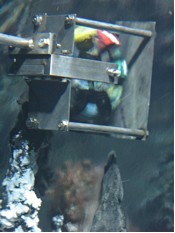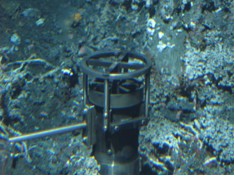Germanovich
New Measurements of Focused and Diffuse Fluid Flow and Advective Heat Flux at the Juan de Fuca Ridge: 2007 – 2009
L.N. Germanovich¹*, D. Di Iorio², G. Genc¹, R. Hurt¹, R.P. Lowell³, J.F. Holden⁴, D.A. Butterfield⁵ & E.J. Olson⁶
Corresponding author: leonid@ce.gatech.edu
¹Georgia Institute of Technology, School of Civil and Environmental Engineering, Atlanta, GA, 30332
²University of Georgia, Department of Marine Sciences, Athens GA 30602
³Virginia Polytechnic and State University, Department of Geosciences, Blacksburg, VA, 24061
⁴University of Massachusetts, Department of Microbiology, Amherst, MA 01003
⁵University of Washington, Joint Institute for the Study of the Atmosphere and Ocean, Seattle, WA 98115
⁶University of Washington, School of Oceanography, Seattle, WA 98195
Abstract:
We present a number of new discrete measurements of diffuse and focused fluid flow and estimates of heat flow from the Endeavour segment of the Juan de Fuca Ridge obtained from ALVIN on four cruises between 2007 and 2009. To make these measurements, we used a variety of devices in an attempt to design an optimal instrument for making discrete measurements of both focused and diffuse flow. The devices shown in Figures 1 and 2 depict the latest generations of devices used. Our most recent device is the turbine flow meter shown in Figure 2. This device was recently tested during the 2009 June expedition at Juan de Fuca Ridge. The results remain to be finalized; however, it appears possible to use the same device to make both focused and diffuse flow measurements. The basic idea of device development was to measure directly vent temperatures at various focused or diffuse sources with ALVIN’s temperature probes and videotape the spin of the blades/cones of the deployed device to determine the in-situ fluid velocities. In the coming months we plan to refine the turbine flow meter by incorporating electronic components on the body to obtain real-time data. We also intend to compare our results with a few previous estimates and observe temporal changes in heat flux at some vents.
Overall more than 50 successful measurements of heat flow have been made on various structures within the Main Endeavour Field in 2007, 2008, and 2009. We are in the process of analyzing these data for incorporation into models of the MEF that we are developing (e.g., see abstract by Han et al.). Currently, it appears that the flow velocities from black smokers at Endeavour (~ 0.1 m/sec) are somewhat lower than at EPR 9N (~ 1 m/sec).
Keywords:
focused and diffuse flow; heat flow; fluid flow instrumentation
Contributions to Integration and Synthesis:
Fluid flow and heat flux are key parameters for constraining models of hydrothermal circulation at oceanic spreading centers. Although integrated measurements of heat flux in the water column are important, point measurements of heat flow from both focused and diffuse flow sites are essential for understanding the partitioning of heat flow into these two components. Moreover, measurements of fluid flow themselves are important for obtaining geochemical fluxes, which are important for characterizing hydrothermal flow and for providing nutrients to both microbial and macrofaunal ecosystems. We are hoping that by developing these new, robust, and relatively simple devices, many ocean ridge scientists will begin making fluid flow and heat flux measurements as a routine exercise at ocean spreading centers.
Figures:
Figure 1. Flow anemometer. Germanovich_fig1.jpg
Figure 2. Turbine flow meter measuring (a) diffuse and (b) focused flows. Germanovich_fig2.jpg


